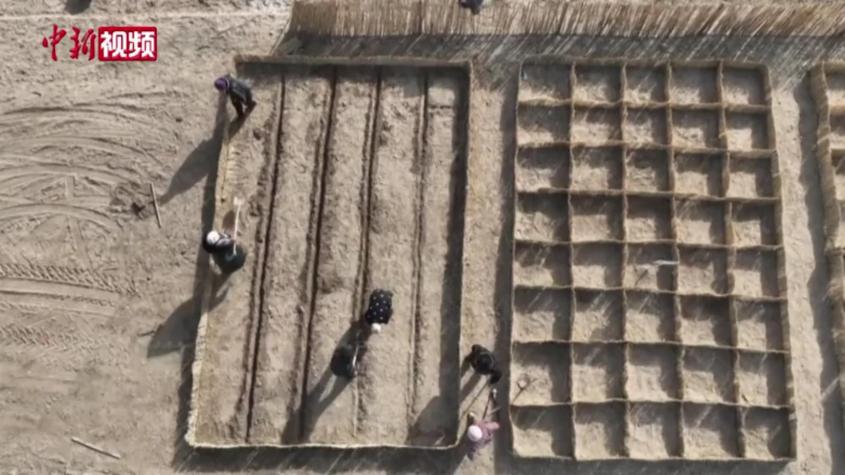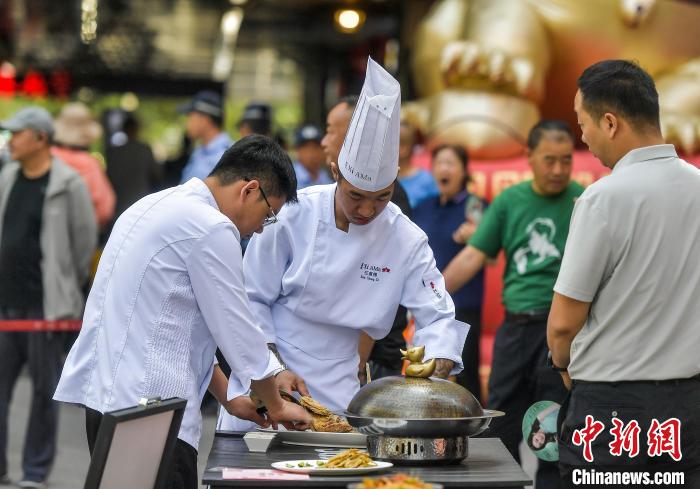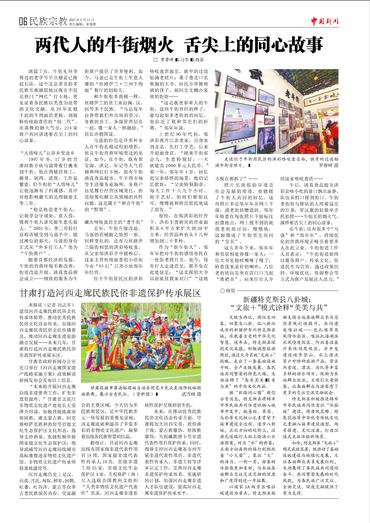Cultivating 'desert ginseng' in Xinjiang brings green wealth to arid lands
(ECNS) — In the vast Taklimakan Desert of Xinjiang, a once-barren landscape is transforming into a thriving green economy -- driven by the large-scale cultivation of Cistanche, known popularly as "desert ginseng."
Locals are not only fighting desertification but also unlocking economic opportunities, boosting incomes and a rise of innovative industries emerging around this valuable medicinal plant.
Known for its distinctive reddish-brown stems and roots, Cistanche has been esteemed in traditional Chinese medicine for centuries.
Its recognition escalated further in 2023 when it was officially listed as both a medicinal and food resource by China's National Health Commission and the State Administration for Market Regulation.
"It's not just medicine, but a powerful ally in battling desertification," said Wang Zhengyuan, a traditional Chinese medicine pharmacist at the People's Hospital in Shaya County.
Shaya County, situated on the northern fringes of the Taklimakan Desert, faces extreme ecological challenges, with nearly 85 percent of its land affected by desertification.
Supported by government initiatives, local Xinjiang Xiancao Rong Technology Co., Ltd. has successfully cultivated five types of desert-adapted shrubs, including Haloxylon and Tamarix, across a demonstration zone.
The company, partnering with local universities, developed innovative equipment like liquid inoculation machines, allowing for mechanized Cistanche planting. To date, approximately about 720 hectares have been planted, yielding around 300 kilograms of Cistanche annually.
As of June 2025, Shaya County has planted over 45,721 acres of desert vegetation, pushing forest coverage to 9.1 percent.
"Harvesting one kilogram earns you about one yuan," said Wang Kaiyan, deputy director of the Populus euphratica Forest Protection Center "A couple can earn you up to 800 yuan a day during peak season. Over 1,000 residents are now involved in planting and harvesting each year."
Beyond primary production, the region is advancing into higher value-added processing. In 2022, the Shaya County Dayun Biotechnology Lab was established in the modern agricultural industrial park, led by a research team from Xinjiang Medical University. The lab specializes in essential oil extraction and other advanced applications derived from local desert flora.
"Cistanche contains antioxidant compounds like phenylethanoid glycosides that help delay skin aging," said Wang Li, deputy director of operations at Jin Huyang Modern Agricultural Development Group. The company launched a self-developed cosmetics line in May 2024, selling over 4,500 sets and generating around 200,000 yuan of revenue.
"Raw Cistanche sells for as little as 30 yuan per kilogram, whereas laboratory-developed extracts can fetch up to 1,300 yuan per kilogram," Wang Li noted. Meanwhile, Wang Zhengyuan is researching chewable tablets combining Cistanche with other herbs to reduce its bitterness and enhance anti-fatigue properties.
"Before, most Shaya residents worked odd jobs or farmed independently," said Bao Jun, deputy general manager at Jin Huyang Group. "Now, they're part of a full industry chain—planting, research, and sales—with stable monthly salaries of around 3,500 yuan."
Bao anticipates strong international opportunities: "Clients in Kazakhstan and Kyrgyzstan are already testing our products. If things go well, we'll enter the Central Asian market this year."
"Green lands, fuller wallets, and better lives—the future of ‘desert ginseng' looks promising," Bao concluded.
(By Zhao Li)





















 京公网安备 11010202009201号
京公网安备 11010202009201号